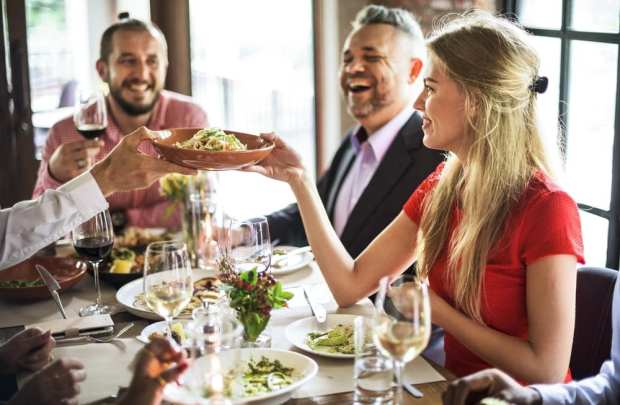The App That Makes Sharing A Meal An Immersive Travel Experience

Having a truly local experience when traveling is often easier said than done. Sure, there is something to be said for a great tourist experience — seeing the famous local sites, eating and drinking, the landmark locations and joining the tour groups. However, even the best tourist experiences have a feeling of being on the outside looking in more than feeling like one is being truly immersed in the local milieu.
Eatwith Co-founder and COO Camille Rumani said in a discussion with Karen Webster that modern travelers are increasingly looking for that kind of immersive experience. Her idea to provide for that desire came in her pre-entrepreneurial days, fresh off an MBA and living in Beijing on her own. The good news for her was that she spoke fluent Mandarin Chinese, and had friends in that area who invited her into their home to celebrate the Chinese New Year.
She came away from the experience realizing two things. The first was how much of a privilege it was to be welcomed into a family’s home and around their table to celebrate a holiday. The second was that this was her first experience of this kind, despite being an extremely well-traveled person.
“When I came back to Paris, it occurred to me that it is crazy we have traveled so much to so many cities, where millions of people are living, and that we never meet any of them,” she said.
This inspired the idea for Eatwith, a platform that — as of the end of 2019 — connects travelers to over 1,000 cities with local hosts willing to prepare them a meal in their own home, and serve it around their own kitchen table, among other offerings. Some hosts, she noted, also offer cooking classes or tours of local markets.
The kitchen table, she added, is a natural point of socialization. There are few ways to get a better taste of a culture (from a local perspective) than to literally taste what’s on the table in a local household.
It’s a simple-sounding premise, she noted, but a surprisingly complex one, as Eatwith is building to a global scale.
Creating A Local Experience
Though Eatwith began in Rumani’s native Paris, the company quickly realized even in its founding days that, in the travel industry, repeat business is the name of the game. Eatwith needed to expand, which it quickly did into Italy and 130 other nations.
On the host side, the platform almost immediately attracted word-of-mouth interest among people who weren’t necessarily chefs (only 3 percent of the platform are what Rumani would designate as professional cooks), but highly skilled home cooks looking to serve as cultural representatives. That second part, just as important as the first, she noted, was that getting a fine meal in any global city isn’t hard — restaurants aren’t exactly in short supply in Paris.
“Being a good host is more than just being a great cook. How do you make this a comfortable, inviting experience? How do you add to a conversation? This is a very active role,” Rumani explained, noting that the average host on the platform runs events for groups of six people or more, usually from diverse international backgrounds.
That is why, she noted, the vetting process for hosts is so rigorous. Eatwith only accepts about 7 percent of applicants to full hosting duties because the process is meant to screen the completely ready from the merely enthusiastic. Hosts must submit bios, backgrounds, recipes, menu ideas and pictures of both the meals they’ve prepared and the space in which they plan to serve them.
Making it past that initial intake doesn’t guarantee getting on the platform, either. Their next job is to put together an event for visitors at a discounted price to see how they actually do with the experience. In the seven cities where Eatwith has staff on the ground, there is an in-person vetting of both the space and the food.
It is only after all that, and after getting positive reviews for their efforts, that applicants are fully accepted as hosts on the platform. It is intense, but necessary, she noted, because what the customer is looking for is that comfortable, welcoming and immersive experience.
As for bringing the consumer onboard, that is a bit more complex.
Drawing The Consumer In
The first thing for which Eatwith must solve is ease of access. Hence, the site makes it easy for customers to see their full range of options, read the chef bios and menus, and (on the whole) study up so they can get the immersive experience for which they pay very well. Eatwith meals cost $120 total per diner — $100 to the host, and $20 to the platform. The customer pays up front before they get there, and the platform pays the host about 24 hours after the meal is done.
However, Rumani added, when bringing customers in, it has been critical for Eatwith to know when to make the right partnerships.
“Building a travel marketplace on a pure B2C business model is hard work, and a long climb. We instead look to partner in the tourism industry,” she said, naming TripAdvisor, CTrip in China and Marriott Bonvoy.
Eatwith has seen on the platform that some 85 percent of the bookings are spontaneous, happening on the same day. Being tied in with these booking platforms surfaces the service for more travelers, and pushes them toward that more experiential-bound booking.
Once they have the experience, she noted, guests want to keep experiencing it whenever and wherever they travel, if they can. That is because there is something about being invited in as a guest — and socializing with people who live there can make even the most foreign place feel more familiar for a visitor.
“The kitchen table is kind of the original social networking point, and we are seeing people [form] real strong connection[s] through this because there is something unique that happens around a kitchen table that doesn’t happen anywhere else,” she said.
